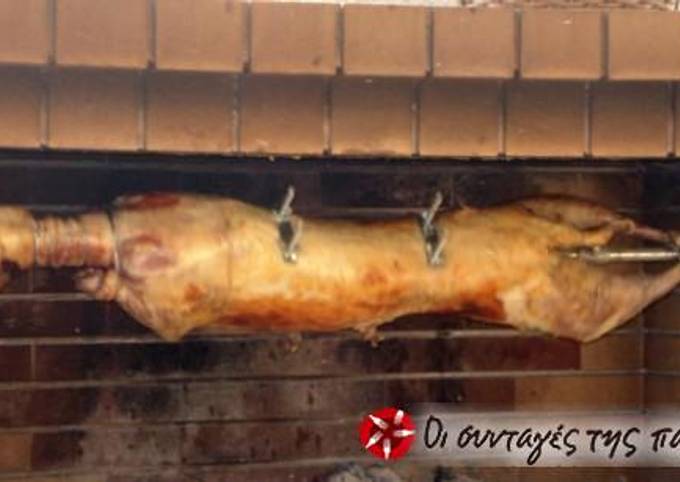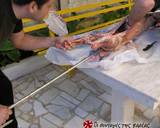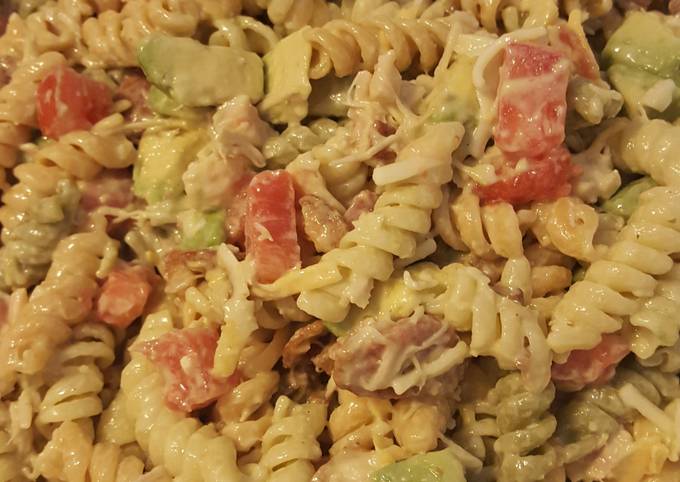
Hey everyone, it’s Brad, welcome to our recipe site. Today, we’re going to prepare a special dish, lamb on the spit. It is one of my favorites food recipes. For mine, I am going to make it a bit tasty. This is gonna smell and look delicious.
Roasting the lamb on a spit is a task usually carried out by the men of the family who happily tend to the spit or souvla while sipping ouzo and enjoying mezethes or appetizers. For the first hour or so and depending on the intensity of the heat, the turning of the spit has to be fast, to prevent the meat from burning or. In this video we show you how to prepare, mount and cook a whole lamb on a spit rotisserie. Cooking a whole lamb on a spit is easier than you think and is a g.
Lamb on the spit is one of the most well liked of current trending meals on earth. It is enjoyed by millions daily. It is easy, it’s quick, it tastes yummy. They are fine and they look fantastic. Lamb on the spit is something which I have loved my entire life.
To get started with this particular recipe, we have to first prepare a few components. You can have lamb on the spit using 6 ingredients and 14 steps. Here is how you can achieve it.
The ingredients needed to make Lamb on the spit:
- Take 1 whole (about 11 kg -13 kg) lamb
- Make ready 1 cup salt and pepper
- Prepare 2 metal clamps for the spit
- Prepare wire and pliers for tying the lamb on the spit
- Get twine and a thick needle for sewing the lamb
- Get 10 kg – 13 kg coal
This spit-roasted leg of lamb rotates on a spit to continually baste the lamb as it roasts. Place the spit through the lamb (rear to head) and if the head is still on your lamb, pierce the skull to help secure the spit. Break the hind legs by the bending them backwards and to allow you to tie them easier to the spit. Secure the hind legs very tightly with your butcher's twine.
Steps to make Lamb on the spit:
- PreparationThe first thing you should do is skewer the lamb. Insert the spit from the hind legs towards the head, through the belly, breast neck and the head.
 1. The hard part is passing the skewer through the head, you will need someone to hold the head and push towards the skewer while you push and twist the skewer until it pierces the skull of the lamb.
1. The hard part is passing the skewer through the head, you will need someone to hold the head and push towards the skewer while you push and twist the skewer until it pierces the skull of the lamb. - Next comes the tying on the spit, but after you have tested it on the place that you will use for roasting to establish the right position on it for tying the lamb. Start with the hind legs that you cross over the spit and tie them with some wire. Push the meat fork into the legs and stabilize it on the rotisserie with its screw.
- Secure it in two more places at the spine of the lamb, one low at the height of the stomach and another at the breast. Use metal clamps or wire but the clamps are more practical!
- Finally, secure the neck of the lamb tightly with wire.
- Test the effectiveness of the tying process by shaking the spit up and down vigorously. It is very important to secure the lamb tightly since in any other case, there is the danger that the spit will turn during roasting but the lamb not!!!
- Continue with the salt and pepper. Coat well all the inside of the lamb. Score the inside area of the hind and front legs but carefully so that you don't pierce the outer part. Also coat with salt and pepper, pressing with your finger.
- Sew the lamb's belly with twine so that it is completely sealed. You should take care to not pierce the lamb in any place (other than the points where you have secured it to the spit)…
- …and the belly should be sewn shut so that as you roast your lamb it keeps all its liquids inside and cooks in them. This helps to keep the undesired blood away from the thick pieces of the lamb and the bones and also to result in a well cooked and juicy piece of meat.
- Season the lamb with salt and pepper and sew the fat caul on it so that it stays put while roasting. The caul melts during roasting and doesn't let it dry or burn.
- RoastingYou will need an equal amount of coal for roasting to the weight of the lamb. Light your fire at least one hour prior to roasting and allow enough time for the coals to turn into embers. Then, spread them out placing the most amount under the hind and front legs and leave very few under the belly.
- Place the lamb over the fire at quite a distance from it (about 40-50 cm) and turn the spit by hand fast for at least 1 hour or more, depending on the intensity of the fire.
- Take care that the lamb doesn't burt at the start when the fire is the strongest and that is why you have to turn the spit quite fast. After 1 - 1 1/2 hour (you can use a motor rotisserie) depending on the intensity of the fire and the way the roasting is progressing, you can lower the spit.
- The required time for roasting is about 3 to 3 1/2 hours. When it is done, place the spit vertically over a large tray, cut the wires, unscrew the meat forks and the lamb falls on the tray! Ready to cut and consume!!
Break the hind legs by the bending them backwards and to allow you to tie them easier to the spit. Secure the hind legs very tightly with your butcher's twine. Once the charcoal is no longer emitting open flame, set your lamb and spit across the cooking area. Start with your lamb somewhat close to the coals (not so close as to touch, but on the lower. This Greek-style rotisserie leg of lamb is a great dish to serve at any get-together or holiday.
So that is going to wrap this up with this exceptional food lamb on the spit recipe. Thank you very much for reading. I’m sure you will make this at home. There’s gonna be interesting food at home recipes coming up. Don’t forget to save this page in your browser, and share it to your loved ones, colleague and friends. Thanks again for reading. Go on get cooking!

